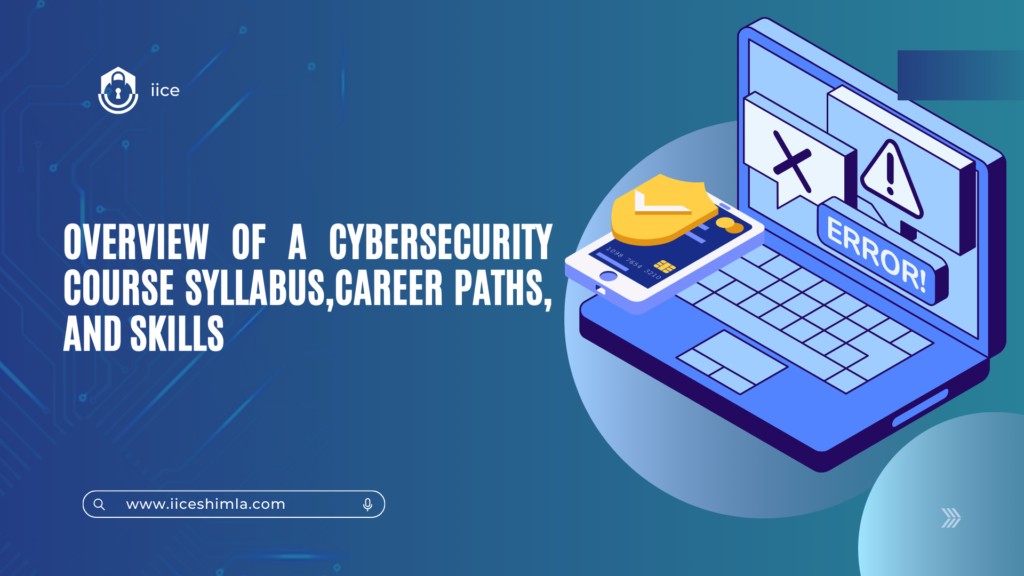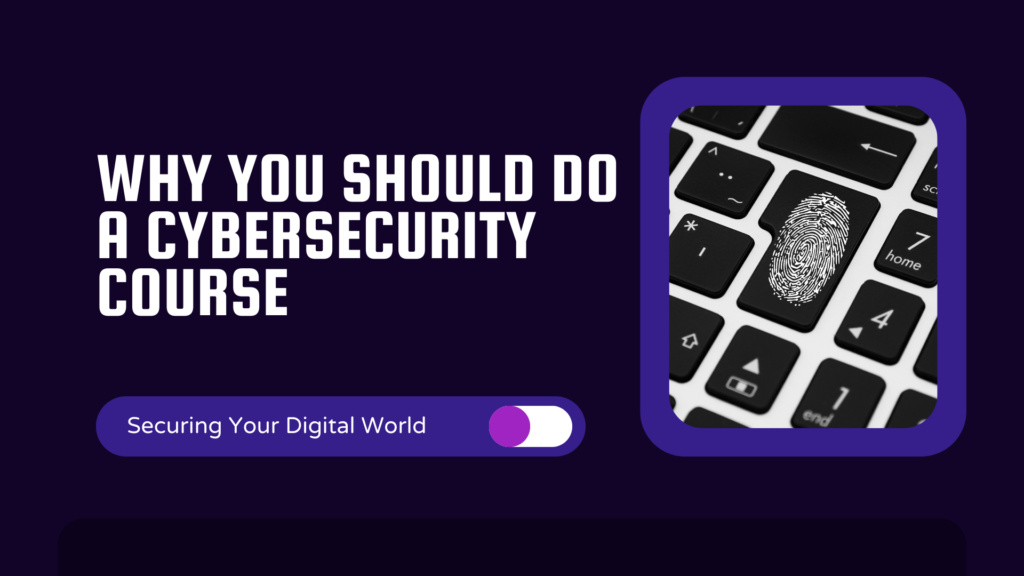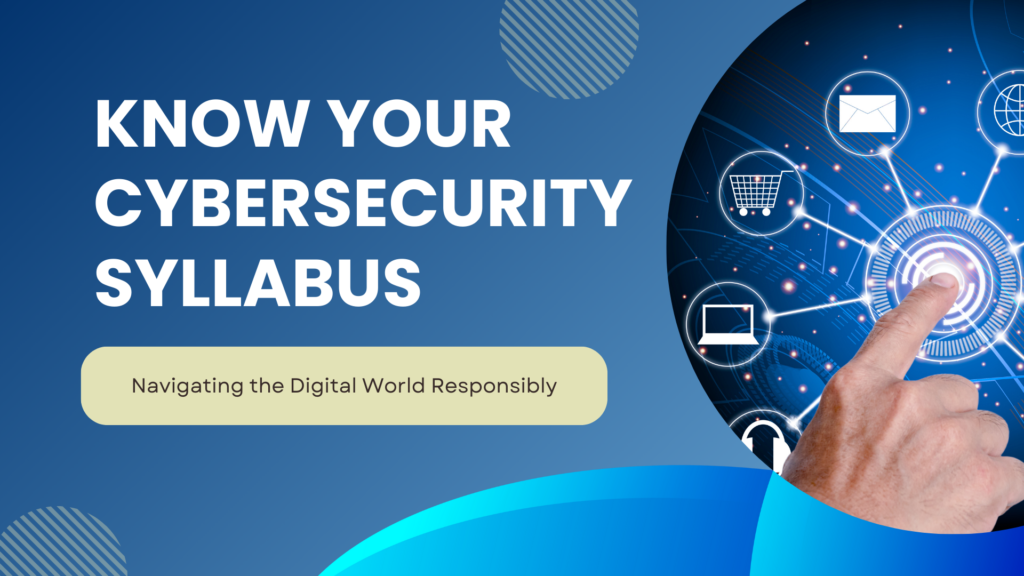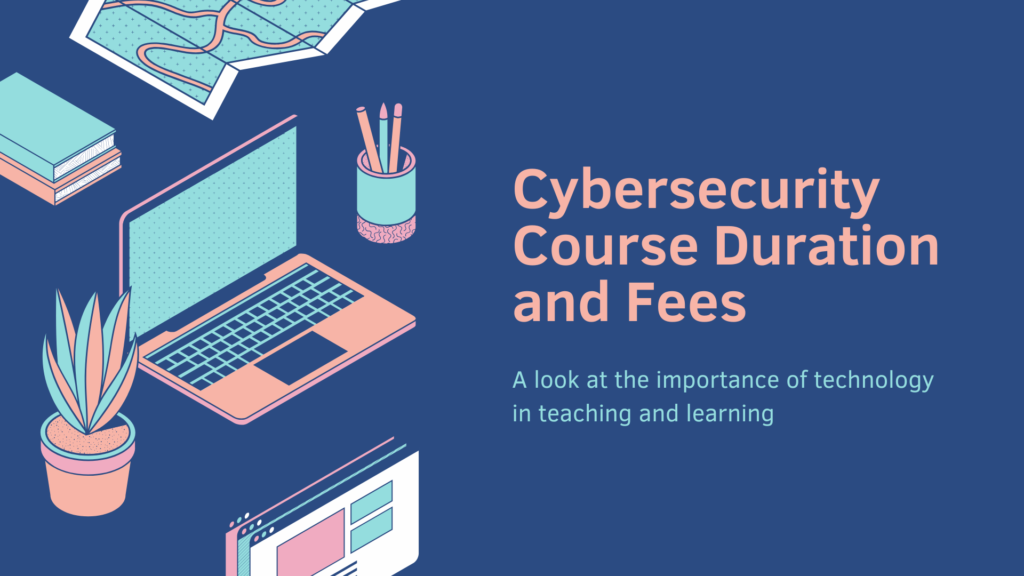
As the world rapidly grows in the digital realm, more reliance by business, governments, and individual concern on technology is becoming a norm; hence, now is a high demand for cybersecurity professionals. Cybersecurity course relates to a method of protecting systems, networks, and data from all forms of digital attacks. In the digital , cybersecurity is becoming a vital concern. With the increasing level of cyber threats, both in terms of scale and complexity, demand for highly skilled cybersecurity professionals has never reached this high level.
Do you plan on a cybersecurity course, be it for beginners or professional development? Let me walk you through the basics of education in cybersecurity course. Now that we’ve covered some of the general aspects of a cybersecurity course, what you will learn, and why balance in education is important for this rapidly emerging field.
What is Cybersecurity?

So first, let us get the definition right before reading the syllabus of this course. Cybersecurity is basically defending systems, networks, and programs against cyber attacks, theft, or damage. And some of these common types of attacks are like a data breach, identity theft, financial fraud, and many others. A job for the cyber security professional: to prevent and detect threats as well as how to respond.
A few more aims for cybersecurity in general include:
Confidentiality refers to the act that keeps information from people it needs not to be reached to.
Integrity: They prevent data from changing or altered or modified
Availability: System and data is made available to legal users.
It involves everything from firewalls, encryption, and intrusion detection systems to the management of risks, policies, and compliance standards. Because of the very high rate of cyberattacks on most organizations, most organizations embrace cybersecurity as part of business strategy. Thus, it is one of the good career options for those interested in technology and security.
Why You Should Do a Cybersecurity Course
There are many reasons why one should take a cybersecurity course:

Cybersecurity professionals in high demand: The world is facing increasing cyberattacks, and there is a growing demand for cybersecurity professionals. Organizations from various sectors look for highly skilled professionals who can protect their systems and data from cyber criminals.
Job Security and High Salaries: Cybersecurity is viewed as one of the highest-paying and safest jobs in the tech industry. Cybersecurity jobs are expected to grow at a much higher percentage than most jobs, with middle-level salaries from Rs.70,000 to well over Rs. 120,000 a year.
There are many career choices available in cyber security along with some multi disciplinary fields that encompass ethical hacking, network security, incident response, risk management, and cloud security. So you will have your preference in a specialized sector.
Challenging and Rewarding Work. Cybersecurity is challenging to work in, but does entail a lot of problem solving. Again, hardly any days working at this job will ever be the same again. It’s a lot of work, and very rewarding, at that.
Know Your Cybersecurity Syllabus

The cybersecurity course always carries a syllabus that will systematically make learning better and provides a student with the overall ideas to be a pro in concepts, tools, or skills used here. Even though institutions or training providers might be varied, cybersecurity courses tend to talk about mostly similar ideas. The next part contains the ideas normally found within an average syllabus for cybersecurity:.
1. Foundations of Cyber Security
Any course on Cyber Security needs to be started by bringing students on par with basic notions and principles that define Cyber Security. The following module would have included:
Definition and Cyber Security Role: Definition and cyber security importance for the global digital scenario.
Evolution of Cyber Security: An aspect that goes on to treat the evolution history of cyber security from its birth to the contemporary era.
Common Cybersecurity Threats: Common cybersecurity threats such as viruses, malware, ransomware, phishing etc.
Cybersecurity Principles and Goals: Understand the fundamental ideas of the three-CIA triad. As the foreword describes basic ideas explaining exactly how and why there is cybersecurity to begin with,
2. Network Security
Networking could also be another critical area in relation to the security and prevention of unauthorized access use, or cyber attack on computer networks. Concepts covered within that chapter will encompass:
Basic Network Principles: A familiarity with how networks work, and the function of protocols such as TCP/IP.
Firewalls: Planning and managing firewalls to keep traffic away that is unwanted to the network systems.
IDPS-Intrusion Detection and Prevention Systems: an overview of tools and techniques scanning networks for suspicious activity
VPNs-Virtual Private Networks: how VPNs deliver secure connectivity to remote users.
This module should be must reading for anyone looking at a career in Network Security, or working in conjunction with larger organizational IT infrastructures.
3. Cryptography
Data security is founded on cryptography. This uses mathematical algorithms (techniques) when encrypting and decrypting data so that sensitive information cannot leak out. This section consists of the following major topics:
Encryption Algorithms: This discussed symmetric and asymmetric encryption.
Public Key Infrastructure (PKI): Study how certificates and keys collaborate in the formation of a secure communication channel.
Hashing: Learn about hash functions and how they ensure integrity of data.
Digital Signatures and Certificates: Digital signature and certificate to confirm authenticity.
This section equips the student with all the equipment required for secure communications, data storage, and transactional purposes. It is hence crucial for anybody who wants to get involved with data security or information protection.
4. Ethical Hacking and Penetration Testing
Penetration testing is also referred to as ethical hacking. The system is deliberately probed to look for weaknesses before malicious hackers get an opportunity to exploit these weaknesses. Some of the issues of this chapter include:
Techniques of Hacking: Familiarization with common penetration testing tools and techniques such as Metasploit, Kali Linux, and Wireshark.
Vulnerability Assessment: The process of performing a vulnerability scan that could eventually become an attack entry point for the attacker.
Penetration Testing Methodology: The procedure to carry out intense penetration testing, starting from gathering information up to reporting findings.
Ethical and Legal Considerations: Knowing ethical responsibility and legal bounds while carrying out ethical hacking.
This module is particularly essential for anyone who would want to become a penetration tester or ethical hacker.
5. Incident Response and Disaster Recovery
Cyberattacks are inevitable; however, it is the way organizations react towards the incident that counts. The incident response module refers to the approach that one uses to deal with the consequences of a security breach. It might include the following:
Incident Response Phases: How to prepare in anticipation of detection and response to a cybersecurity incident.
Digital Forensics: Techniques applied after a breach occurs to investigate and analyze evidence.
Disaster Recovery: Restoration of systems, data, and services after an attack.
Business Continuity Planning: Identifying the strategies in terms of what business can be continued despite a security breach.
This course is really helpful to the ones who intend to pursue incident response or disaster recovery as their career.
6. Cloud Security
Cloud computing penetration into every kind of industry is making security of the cloud environment the primary issue. Some of the mainly discussed topics are:
Cloud Service Models: Differences between IaaS, PaaS, and SaaS
Cloud Security Challenges: New security risks and vulnerabilities created by cloud environments
Cloud Access Security Brokers (CASBs): Solutions for securing data across cloud services
Securing Cloud Applications: How to protect applications running in the cloud from cyber threats
Cloud security knowledge is important to those working within organizations that make use of cloud services or who are cloud service providers.
7. Risk Management and Compliance
These include risk management, which is part of cybersecurity that analyzes risks and creates strategies to mitigate such risks. Therefore the compliance module would typically comprise
Risk Assessment: Identify the assessment of risks to assets and systems within an organization.
Regulatory Compliance: Familiarization with regulations within the industry, such as GDPR, HIPAA, PCI DSS, and others.
Security Policies and Procedures: The establishment and implementation of policies aligned to encourage security within organizations.
Business Impact Analysis: This module identifies the impact of all kinds of risks on business operations. It is absolutely indispensable for security managers, compliance officers, and risk managers.
The most important part of any cybersecurity program is hands-on lab activities because students get a chance to apply theoretical knowledge to real-world practices in the labs. The following are some examples of lab activities that may involve hands-on use of cybersecurity tools and platforms: conduct penetration tests, configure and administer firewalls and VPNs, simulate security incidents, encrypt and decrypt data.
These practicals are very essential to ensure that the students develop technical skills that would be needed in real-world cybersecurity environments.
Cybersecurity Course Duration and Fees

The duration and fees for a cybersecurity course will depend on the level of the program and the institution offering it. Here is a rough idea of what to expect:
Short-term courses are usually online and last from a few weeks to a few months, and the cost is between Rs.100 and Rs.1,000.
Professional certificates
These may take preparation from several months ahead, like the CompTIA Security+, CEH, CISSP; this can cost anywhere between Rs. 500 to Rs. 5,000.
Bachelor or Master degree course. About 3-4 years for a bachelor’s, about 1-2 years for a master’s in formal degree courses. Tuition fees for such courses range between Rs. 10,000 and Rs.50,000 annually, depending on the college.
Conclusion
The digital world never stops evolving, so does growth; therefore, the need for security in the world’s information systems will always have a way in through cybersecurity. Whether you are a beginner or want to upgrade your skills, a well-rounded course syllabus in cybersecurity prepares one for this fast-evolving field. Today, the need for cybersecurity professionals is on the rise; thus, it would be an ideal time to enroll in a course and start developing skills to provide a fulfilling and safe career.
